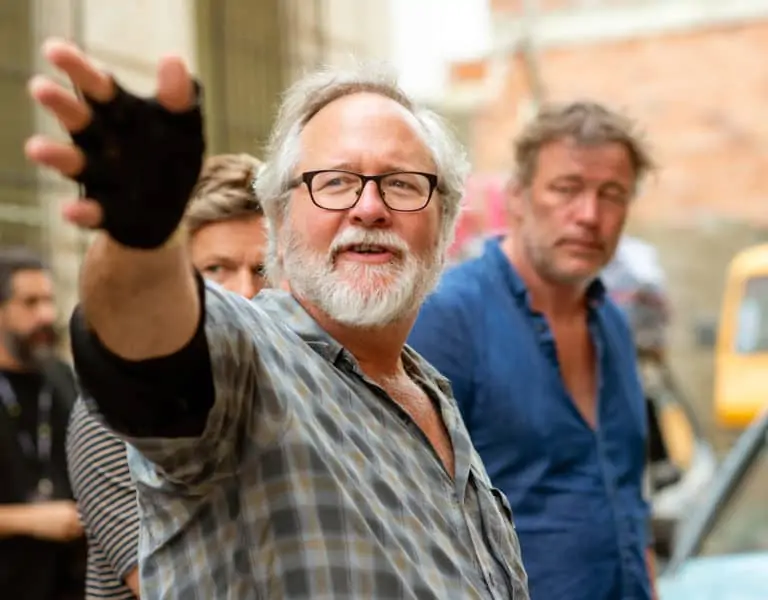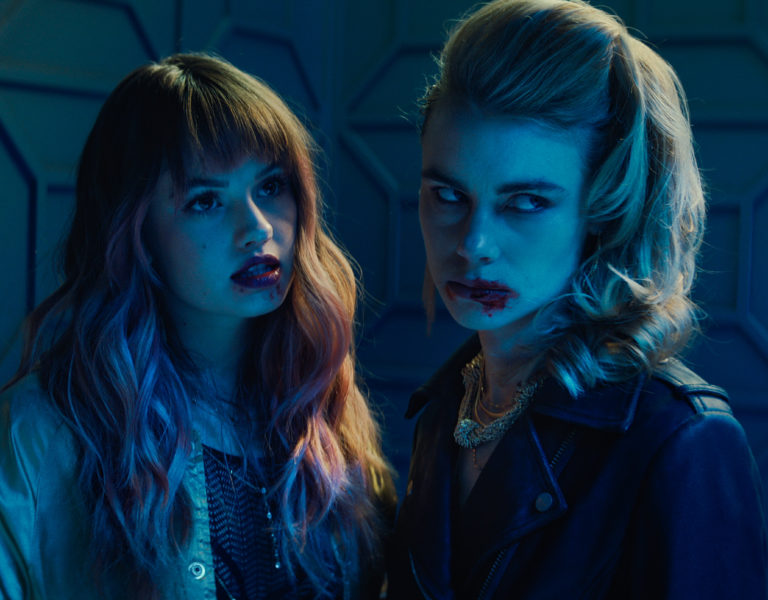Satire In Space
Eben Bolter BSC / Avenue 5

Satire In Space
Eben Bolter BSC / Avenue 5
BY: Michael Burns
With a spaceship-sized set, comic timing, a thousand-strong cast, integrated lighting, and a devastating fire, British cinematographer Eben Bolter BSC and the crew of Avenue 5 steered Armando Iannucci's sci-fi epic to the screen.
Avenue 5 is a big-budget HBO series from comedy genius Armando Iannucci, set on a luxurious cruise liner in space named Avenue 5. Bolter boarded the project early-on, after a successful, extended, three-hour interview with Iannucci and producers including Kevin Loader, as well as a meeting with Simon Bowles, who was responsible for series production design. Bowles and his art team had already been working on the project for a year.
"All kinds of work had already been done," says Bolter. "They wanted to bring me in to collaborate with Simon very early because we were going to have to integrate a lot of our lighting into the set."
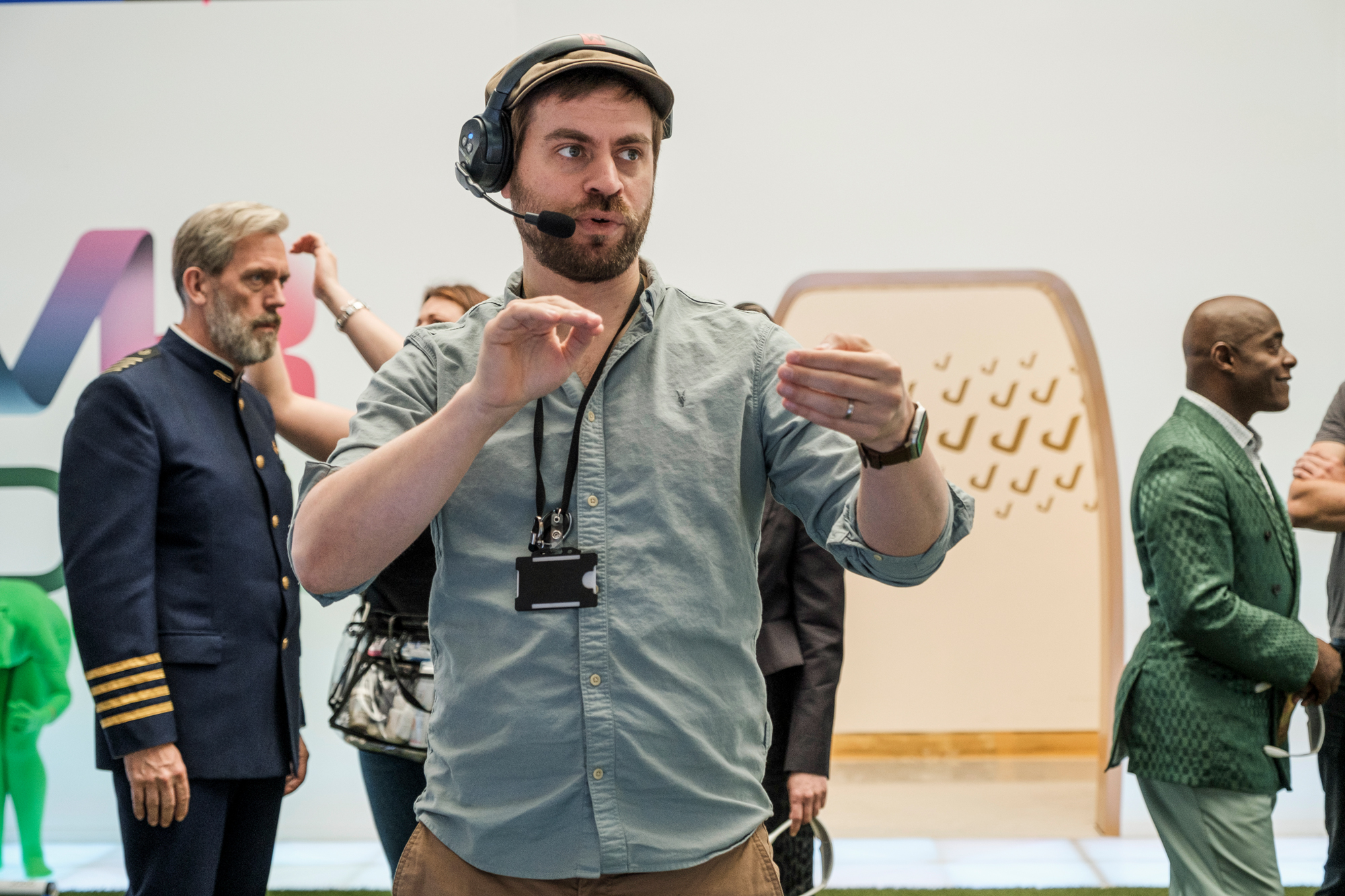
For Bolter, whose background solely in drama meant he was more used to single-camera, or at most two-camera projects, the shift to multi-camera comedy, with a focus on catching reaction and comic timing, must have been akin to a jump to hyperspace.
"We were on between two and four cameras at all times," says Bolter. "I had a headset for my operators, and I sat there with a full array of screens, just trying to keep our framing and operating as cinematic as possible, and not getting in the way. We absolutely didn't want it to look like every other sort of studio multi-camera comedy. That was the 'anti-brief'."
All four cameras were the Alexa Mini and Bolter shot Avenue 5 using Leica Summicron-C lenses. "I just wanted relatively clean, fast, reliable lenses," he says. "We shot Alexa 3.2K ProRes for Ultra HD transmission.
"Simon Surtees at ARRI Rental London provided all the kit for the series. We had a Technocrane here and there, used a Mövi gimbal a lot and had a Steadicam available to us at all times."
In terms of shooting, the idea was to differentiate the three main areas on the show to visually give the audience a shortcut to where they are and what the atmosphere is. The first is set on an Earth of around forty years in the future. To cover NASA mission control and other locations set on Earth, Bolter says he leaned into Iannucci's The Thick Of It (2005-12) and Veep (2012-19).
"On Earth we said, let's be 'old school Armando'," he explains. "It was 100% handheld, we used Angénieux zoom lenses and we were doing punch zooms and comedy zooms."
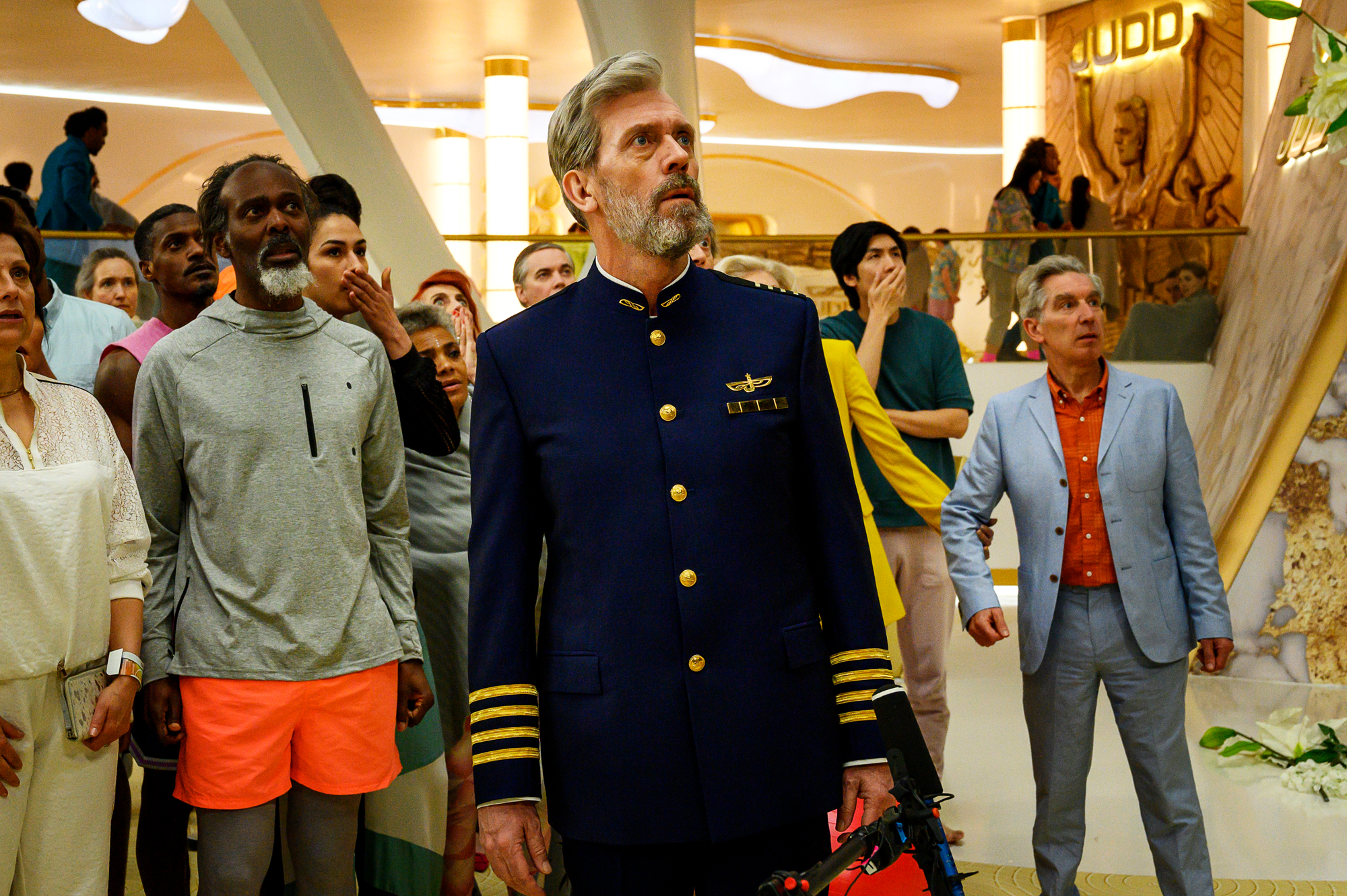
Two more contrasting 'world' styles can be seen on board the Avenue 5 vessel itself. "There's the front of the ship, a ridiculously over-the-top luxury cruise liner," says Bolter. "The back of the ship, where the engineers are, is like an old greasy oil rig.
"In space, at the front of the ship, the lighting and the camera work was a lot calmer and steadier and locked off, and occasionally on dollies. There was a lot of Steadicam work," he explains. "At the back of the ship, we sort of split the difference between the front of the ship and on Earth: we didn't use zoom lenses, but we were a little bit more handheld. The lighting was a lot more industrial, with more hard sources. I think those two worlds colliding created something quite interesting."
As well as showrunner Armando Iannucci, who directed the pilot episode, there were seven other directors for other episodes.
"Armando was there every single day of the shoot," says Bolter. "The usual configuration would be the director in the middle with their own monitor, Armando on one side with his monitor, and on the other side was my monitor, split for all four cameras. All the camera operators wanted feedback on every take, so you had to be looking at all four at once, somehow."
The way Bolter describes the process, it sounds like an OB van during a live broadcast.
"By constantly monitoring those four shots and just really being in-sync with the operators and with the director, we were always alive to what was happening.
"There's a thing with comedy, and with this style of operation, where you can make those fluid choices," he adds. "Occasionally we'd end up with these absolute moments of magic that you could never rehearse, where the cameras land on a line at just the perfect time, and then you jump to a reaction. You are kind of editing in-camera when it flows like that. You get these little alive moments that are just so truthful and funny."
"I was on the job for eleven months, until we wrapped, which is the longest I've ever done. That included six and a half months of prep, a really long time," says Bolter. Part of the reason for this was the fact that Avenue 5 stretched over four stages at Warner Bros. Studios, Leavesden.
"P-Stage was our biggest and we filled that with the Atrium set, which is at the front, luxury part of the ship," says Bolter. "That was a three-tiered set with working glass elevators, with grand staircases, it was just absolutely enormous.
"We had 1,000 extras on it, if we had a crowd day, and we really had to recycle those extras and make it look even remotely full, the set was just so big.
"For a continuous Steadicam shot, I had the ability to be able to be on the third floor on one side, get into an elevator, go down three stories, walk across the atrium, then go back up three stories on the other side," he continues. "I needed to make sure that's going to work all the way in terms of lighting."

"A lot of sci-fi tends to be sort of desaturated and cold, but we decided to go rich and colourful. I'd get my DIT Sam Spurgeon to output a wide shot of the set at new times of day as we shot them and assemble them into a grid, a running colour board. As we got halfway through the shoot, we'd look at that grid and see what we were missing in terms of colour."
- Eben Bolter BSC
Integrated lighting, using 5km of RGB+WW LED strip, was built into the sets at Leavesden, and Bolter used SkyPanels above the set where he could hide them.
"We had a lot more top lighting just because we couldn't have lights in shots," he says. "We got 180 ARRI SkyPanels from Warner Bros. Lighting. They were they all permanently rigged. We had a massive softbox which was full of SkyPanels."
All the lighting could be controlled by Bolter from an iPad.
"We had ultimate control, everything was LED, completely colour- and level-dimmable, so the prelight became absolutely crucial. We'd set up a massive wide shot, and I'd first work on lighting, on the practical fixtures to create a day mode for the atrium, which we had pre-visualised. Then we'd spend a day or two moving around every little corner of the Atrium, tweaking things. We worked our way around the whole stage, and then came right back to the beginning, to do that wide shot again, and make sure that we were still happy with it. We'd then have a kind of 'day mode' and that would be locked in, to be accessed at the press of a button. Then we'd repeat the process, so that we'd have an evening mode and a night-time mode."
The process built up a library of looks, for a day and evening and a night, in every single room - as well as the massive Atrium there were over thirty room sets in total.
"Then scene by scene we'd make a tweak, relative to what was required and what was happening," says Bolter. "But it was so quick. I could be there at the monitors and I could just go 'actually on take two, let's make sure we change that', It's done in seconds. There's no gel, there was no going up and down ladders. It was just on an iPad."
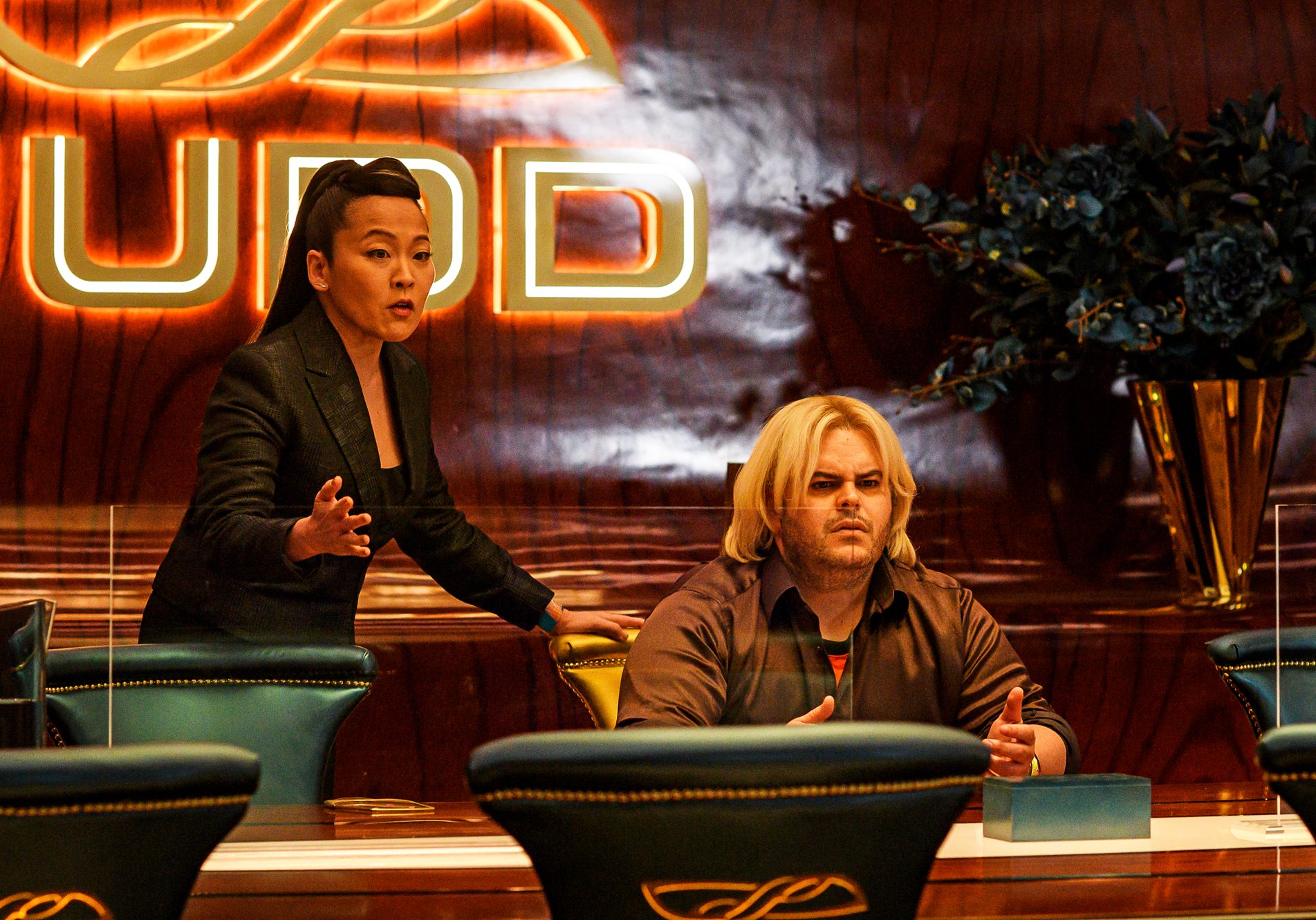
As well as production design, Bolter was also able to work very early-on with costume and make-up departments. "We looked at how we could contrast costumes against the set design, against the lighting, Bolter says. "When I was doing my prelight on set we always had stand-ins in full costume. On the bridge for example, we'd look at how the bridge crew outfit looks like in the night mode, then we're try it in the day mode."
"From the beginning we always looked at how we keep things visually interesting over the course of the whole series," he adds. "A lot of sci-fi tends to be sort of desaturated and cold, but we decided to go rich and colourful. I'd get my DIT Sam Spurgeon to output a wide shot of the set at new times of day as we shot them and assemble them into a grid, a running colour board. As we got halfway through the shoot, we'd look at that grid and see what we were missing in terms of colour."
This being sci-fi, VFX were also hugely important. "I heard there's one VFX shot every six seconds in Avenue 5," says Bolter. "Simon Frame, the VFX supervisor, was there the whole time on the set. He, Simon Bowles and I were a creative triangle, trying all the way through to make sure we were giving Armando and HBO what they wanted."
Three weeks before Avenue 5 wrapped, a fire devastated the Atrium set at Leavesden, burning for 15 hours. "We had two episodes left to shoot," says Bolter. Our biggest set burned down completely, with all the steel work, the elevators and everything else was completely trashed.
"The last two scripts had to change completely, because anything set in the Atrium suddenly could not be there," he continues. "We very quickly figured out where we could move things, and change scenes in new locations. And, I really believe, it forced us to be more creative. Luckily, we had slightly shot out-of-order - we'd already shot episode eight, but we hadn't shot seven or nine. So [the Atrium] will disappear and then come back again. It makes it even more seamless, actually."



